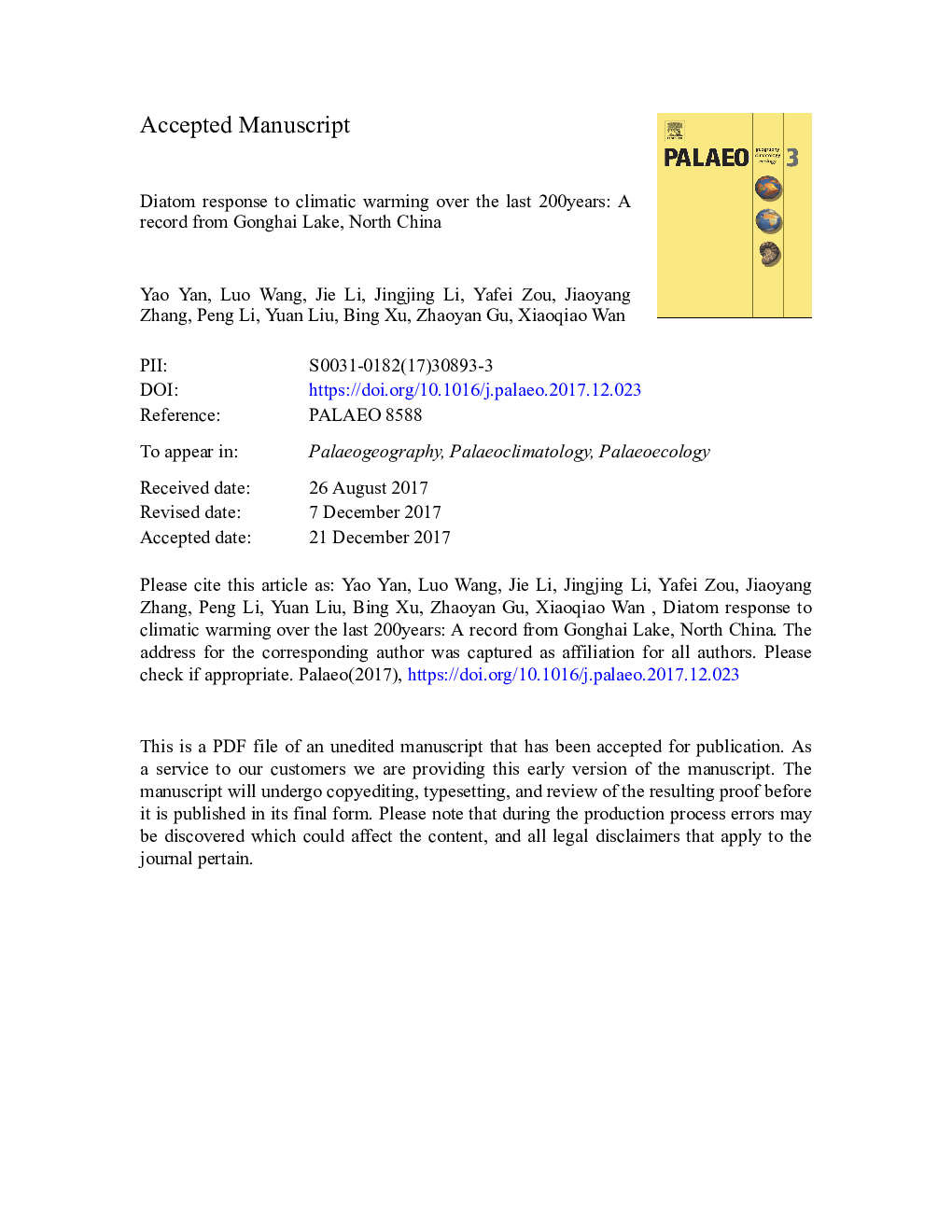| Article ID | Journal | Published Year | Pages | File Type |
|---|---|---|---|---|
| 8868316 | Palaeogeography, Palaeoclimatology, Palaeoecology | 2018 | 52 Pages |
Abstract
Annual monitoring data and centennial and millennial-scale paleolimnological records have revealed an increase in small-celled planktonic diatom species relative to heavier tycho-planktonic and small benthic diatoms in many high-altitude lakes, presumably in response to recent climatic warming. In addition to changes in the composition and structure of lacustrine diatom assemblages, there have also been changes in diatom biodiversity; however, these changes are not regionally consistent. In this study, we chose a temperate mid-latitude lake to explore the response of changes in diatom assemblages and biodiversity to recent climatic warming. The diatom record spans the past ca. 200 years and reveals that since 1966 CE the small-celled Cyclotella ocellata + stelligera has replaced the previously dominant, large-celled phytoplankton Cyclotella schroeteri. These changes are in accordance with the increasing trend in global mean surface temperature. Biodiversity increased remarkably from 1966 CE, but began to decline after 1990 CE, presumably in response to rapid climatic warming. Our findings indicate that the response of diatom biodiversity to climate change was a nonlinear process.
Related Topics
Physical Sciences and Engineering
Earth and Planetary Sciences
Earth-Surface Processes
Authors
Yao Yan, Luo Wang, Jie Li, Jingjing Li, Yafei Zou, Jiaoyang Zhang, Peng Li, Yuan Liu, Bing Xu, Zhaoyan Gu, Xiaoqiao Wan,
